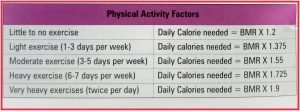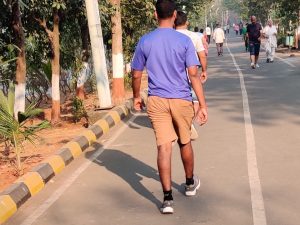
Introduction-
Osteoarthritis management is a challenge that most of us face while we are suffering from it. But it is not difficult.
In this article, we will learn the management of osteoarthritis-its prevention in the first place, and if you are already into it, how to manage it depending upon the various stages. In my last post, I have discussed what happens in Osteoarthritis.
According to the WHO, 9.6% of men and 18% of women above 60 years of age have osteoarthritis all over the world. The scenario in India is that OA is the second most prevalent arthritis with figures of 22% to 39% in a population suffering from arthritis of any kind.
Out of these, nearly 45% of women aged above 65 years have symptoms, while 70% of those above 65 years also show changes in their X-rays of the affected joint/s.
Here is where the management of osteoarthritis, particularly its prevention comes into play.
Osteoarthritis management- what did I do to prevent the progression of my Osteoarthritis?
In December 2016 I was having difficulty climbing stairs, even though I stayed on the first floor of the building. I noticed that I had put on weight more than 10 kg. Even though my diet was as it was before I had put on weight.
I was also getting pain in the knees while climbing down. I was getting the feeling of something grating inside my knee. A time came when I had to take the support of a friend to walk me home, even though the distance was only a few furlongs from my clinic.
I was then advised by a friend of mine, who runs a pathology lab to get some blood tests done. It was then that I found out that I had Hypothyroidism which was the cause of my weight gain.
Later on, I went on to get my knee X-rays which showed that I had early signs of Osteoarthritis. Next, I sought the help of a senior orthopedic surgeon friend of mine who confirmed the OA and advised me to come for Total Knee Replacement[TKR] surgery after 2 years.
Hearing about TKR, I decided that I should do something to prevent the further progression of my osteoarthritis and I began learning more about it. So, the osteoarthritis management was brought about by me that helped me-
- Reduce weight
- Have a diet with healthy nutrients
- Medications that improved my knee joint mobility.
So what did I do next?
This prompted me to write an article on Osteoarthritis management so that I can help people to overcome the difficulties faced by them when they get OA. In my first article, I have described how OA happens and after doing some research into it, I have come out with ways to prevent it as well as treat it if you get it.
As said above, after I was advised TKR, I went about treating myself after getting relief from pain. At that time, I was walking [rather limping] with difficulty. So I searched on Amazon and purchased-
- A pair of good quality kneecaps which I am using even today while I go for my morning walk.
- A pair of self-heating knee straps, which helped me get relief from constant pain.
I was advised not to stop walking. The reason being, walking prevented stiffness of the joint as well as improved the lubrication of my knee joint and circulation of blood to the joints.
As was in the early stage of osteoarthritis, I took some nutraceutical capsules which helped me to regenerate the cartilage in my joints to some extent and prevented further damage. I will come to this in the treatment part of the article.
How to Prevent OA:-
These are a few measures to prevent OA:-
1.Regular exercise like brisk walking/cycling-
In today’s busy life, people have a sedentary lifestyle wherein they barely walk. Because of the time shortage due to the heavy working schedule and deadline given to them, people prefer to travel to work even if it is a short distance to cover.
This results in the muscles and bones not getting the much-needed exercise to keep tuned up. We also put on more weight. As we age, this causes muscles to stiffen, giving rise to cramps in the calves and pain in the knee joints leading to osteoarthritis.
Brisk walking can prevent this, at the same time having beneficial effects on other parts of the body, including your mind.
Other important exercises that can prevent osteoarthritis are cycling and swimming.
Some other benefits of exercise – how does it help in Osteoarthritis management-
According to research, apart from strengthening our muscles and joints, exercise also helps in –
- Reducing stress on your knee joints. Research has shown that 1 kg reduction in weight can reduce the pressure on your knee joint by 9 kg. That means, if you reduce 5 kg weight, the stress on your knees reduces by a whopping 45 kg, thereby reducing pain and inflammation of osteoarthritis substantially.
- Body weight has a direct impact on the health of your knee joint. A person with normal BMI has approximately 3 to 4 percent chance of getting OA whereas the one with BMI in the range of 30 to 35 (grossly obese) has almost 20 percent chance of getting OA.
- Increasing hormones like endorphins and melatonin. Endorphins are natural pain killers and melatonin helps in getting good sleep.
Both exercises like cycling and swimming help in reducing pain as well as building your quadriceps muscles as shown in the picture below-[click the picture to know how it works]
To know more about the benefits of walking, Click here–1 & 2
2. Reduce weight-
It is very important to reduce your weight and bring it to your Ideal Body weight if you are grossly overweight.
Bodyweight has a direct impact on the health of your knee joint. A person with normal BMI has approximately 3 to 4 percent chance of getting OA whereas the one with BMI in the range of 30 to 35 (grossly obese) has almost 20 percent chance of getting OA.
Let’s first calculate your ideal bodyweight and the go about how to manage it. You can use this gadget-
Just put in your height in centimeters and click the submit button. This will show your ideal body weight.
Next, calculate how much weight you have to lose by subtracting this weight from your present weight. You will know the excess weight you are carrying which may be a probable cause of your Osteoarthritis pain and/or swelling.
How can you do this?
This is a plan which I follow daily-
- After my morning rituals after getting up, I go for a walk. The time of the walk and the distance covered varies from day-to-day. A look at the screenshot shown below will give you an idea of how I do it –

- I avoid taking pain killers for my knee pain unless it becomes unbearable. Then I use some safe pain killer like tramadol (Ultracet) temporarily. Having pain is a signal that something is wrong with the joint that should not be neglected. At the same time, a range of joint movement should be carried out to keep that joint moving.
- I have strengthened my quads (quadriceps muscles) by doing these exercises-
- Avoid squatting on the floor if you feel you are going in for OA. This is known to damage the cartilage of the knee joint.
- Use Western-style commode instead of an Indian style toilet as shown below.
This will also prevent damage to the cartilage.
Remember, exercise builds strong muscles and bones in the long run, so do it even if there is a slight pain. This pain will disappear in the course of time.
Having said this, in the early stages of arthritis (see the stages of OA here) we should not slow down but try some exercise like stationary bike cycling or walking in a swimming pool.
Work out in an open-air gym –

It is important to increase muscle mass surrounding the joint. In most parks, we are provided with open-air gyms that are gentle on our ailing joints and at the same time help us to gain muscle mass. Make a point to use them regularly.
Here is an interesting article written by Dr. Joel Yong on how to prevent pain and progress of Osteoarthritis.
For more about exercise for OA, you can visit this website.
3. Eating right-
‘What we eat is what we become ‘ is a saying which is true to its last word. Many a time we like to binge on our favorite food without thinking of the consequences of eating the wrong type of food. Eating a well- balanced diet will help you overcome-
- Unwanted weight gain
- Thereby reducing the load on affected joints
- And ultimately, reduction in joint pains.
So, eating the right types of foods and in the right quantity goes a long way in preventing the progress of osteoarthritis. Your food should be a proper balance of all the macronutrients as well as vitamins and minerals.
How do I know how much to eat-
Depending upon your age and weight, I would suggest you get your energy requirements right. First, you should calculate your BMR [click here] and then calculate your energy requirement as per the table given below:-

After calculating the amount of energy you need, break it up into 4 to 5 portions viz. breakfast, brunch, lunch, evening tea, dinner- and allot the food quantity accordingly. For example, if your total energy requirements are 2200 calories per day, you can divide it as follows-
- Breakfast- 20%- 440 cals
- Brunch- 10%- 220 cals
- Lunch- 40%- 880 cals
- Tea- 10%- 220 cals
- Dinner- 20% – 440 cals.
This way, you will be able to reduce the workload on your digestive system and also get a restful sleep at night.
Which foods should I eat or avoid-
There are a variety of foods that you can enjoy in managing osteoarthritis. And there are some types of foods that you should avoid to prevent flare-ups of inflammation in OA. This website will show you the best choices- the good as well as the bad ones- Click Here.
Friends, apart from my clinical experience, a lot of research has gone into writing this article. In the course of writing, I have referred 2 books which have given me many an insight to Osteoarthritis management.
I would like to share the name of books which I have referred here-

You can get these books on Amazon as a Paperback or as a Kindle eBook- just click this link.
This book is available free on Kindle Unlimited if you are a member and can be downloaded on the free kindle app on your smartphone, tablet, or desktop.
Having said this, I invite you to share with me your overall personal experience of preventing osteoarthritis if either you or relative is suffering from it.
For further information on Osteoarthritis, you can visit some or all of these sites:-
You can also learn a lot more about Osteoarthritis by listening to this podcast on the topic here.




